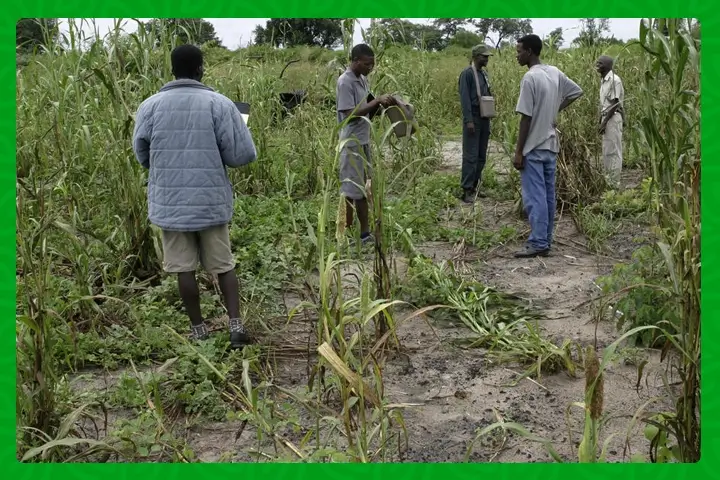
Namibia’s intricate dance with the unpredictable nature of rainfall for food production is illuminated in the latest agricultural data. In 2022, the Karas region stood out with the highest white maize production, reaching 29,842 tons, with a substantial 46% relying on rainfed methods. This statistic underscores the ongoing challenge faced by the country in reducing its dependence on rainfall for food production.
The reliance on rainfed agriculture is evident in the figures, with 26,371 hectares out of the collectively planted 32,127 hectares being rainfed, while 5,756 hectares were irrigated. These numbers underscore the significant role that rainfall plays in agriculture, especially as Namibia grapples with another drought, resulting in low harvests for small-scale farmers and widespread hunger.
Despite the vulnerability to rainfall, Namibia has strategically positioned green schemes, numerous dams, and a 150-kilometer canal ensuring a consistent water supply. Abundant aquifers stretching from Grootfontein to the Ohangwena regions further facilitate irrigated crop production.
The delicate balance between rainfall and food security is emphasized in the Namibia Agronomic Board’s newsletter, “Seasons Harvest,” which highlights the potential for a 50% increase in local production to meet domestic demand with adequate rainfall.
In 2022, out of the total 98,824 tons of white maize produced, 46% was rainfed, and the remaining 54% was produced under irrigation, underscoring the intricate relationship between rainfall and food security. Regions heavily dependent on rain might face challenges without sufficient rainfall, necessitating imports to meet white maize demand and potentially weakening food security.
Local demand for white maize in 2022 was 191,029 tons, with 52% produced domestically and 49% imported, primarily from South Africa. The 2022 season marked the highest white maize production since 2010, totaling 98,824 tons—a significant increase of 16,099 tons from the previous year.
Karas led in production with 47% of the total tonnage, followed by Central with 24%, and North Central with the lowest at 1%. During the marketing season from May 9, 2022, to December 3, 2022, Namibian producers sold over 98,000 tons to local millers, amounting to approximately N$622 million, reflecting an 8,000-ton increase from the previous season.
While wheat production experienced commendable growth of 13% in the 2022 season, pearl millet production faced a notable decline of nearly 40%. The Namibia Agronomic Board attributes the positive harvest to increased local producers and expanded planted hectares, indicating a commitment to enhancing output and achieving self-sufficiency in staple food production.
As Namibia anticipates substantial rainfall in the upcoming season, concerns persist about the ongoing reliance on unpredictable weather patterns for agricultural sustainability, especially for rainfed farmers. The delicate balance between nature’s unpredictability and the nation’s quest for agricultural self-sufficiency remains at the forefront of Namibia’s agricultural landscape.
Stay updated with the latest farming tips and agriculture industry news from Africa by subscribing to our newsletter. Don’t miss out on valuable insights and updates. Follow us on Twitter, LinkedIn, and Facebook to join our farming community and stay connected with us.



















